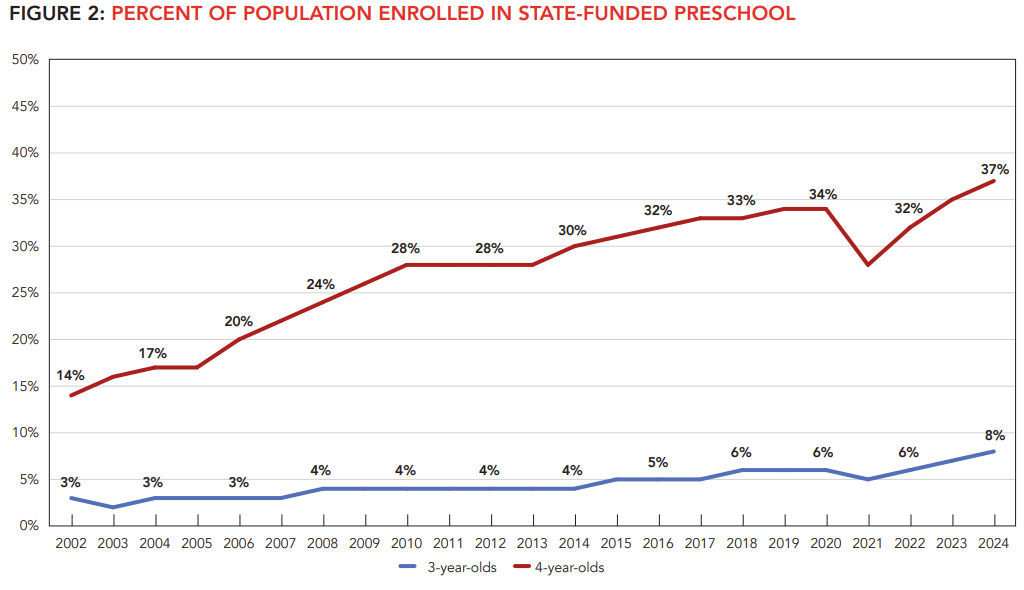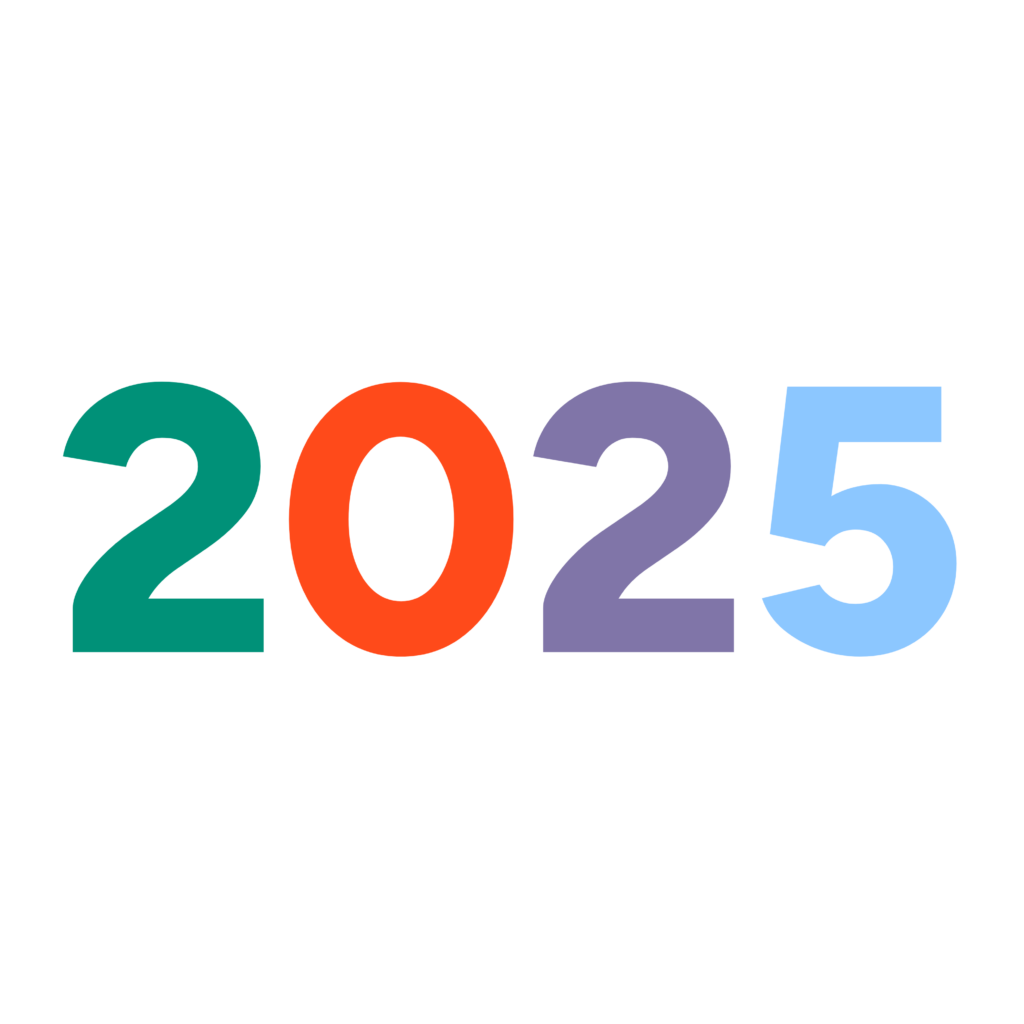NIEER Releases Their Annual Report on the State of Preschool

This week, the National Institute for Early Education Research (NIEER) released their 2024 State of Preschool Yearbook, offering a comprehensive analysis of state-funded preschool programs during the 2023-2024 school year.
As the 22nd edition of this annual report, it continues to serve as a critical resource for policymakers, educators, and advocates, providing data-driven insights into enrollment trends, funding levels, and quality standards across the U.S.
The 2023-2024 school year marked a period of recovery and growth for state-funded preschool programs, with historic highs in enrollment and funding driven by both federal relief dollars and renewed state investments. However, progress remains uneven, with persistent gaps in access and quality threatening long-term benefits for children. The Yearbook provides a wealth of information that highlights the importance of federal early childhood funding in states, encourages policymakers to create policies that will preserve and increase investment, and highlights positive and varied state examples to draw inspiration from.
Key Takeaways from the Report:
Enrollment:
- Enrollment reached a record high of 1.75 million children in the 2023-2024 school year, a 7% increase from the prior year.
- State enrollment among three- and four-year-olds increased as well, with 37% of four-year-olds and 8% of three-year-olds being served.
- State-funded preschool enrollment increased in all but nine states, but states working towards universal pre-K accounted for most of the nation’s progress.

Funding:
- State-funded preschool funding reached record highs with states spending more than $13.6 billion, an inflation-adjusted increase of almost $2 billion (17%).
- All reported funding (state, local, and federal) supporting state preschool reached an all time high of $15.3 billion. States reported $257 million in COVID-19 relief funding, less than half of what was spent in the 2022-2023 school year.
- State spending per child reached $7,888, an inflation-adjusted increase of $675.
- State, local, and federal sources totaled $8,857 per child, reflecting a strong increase in state funding during a time of declining federal recovery dollars.
Quality:
- Quality standards is an area in need of improvement as some states lowered educational requirements and increased child:staff ratios in the 2023-2024 school year.
- Alabama, Hawaii, Michigan, Mississippi, and Rhode Island remain the only states to meet all ten of NIEER’s benchmarks for minimum quality standards for preschool, however, eight states come close with nine benchmarks met.
- 21 programs met five or fewer, however, these 21 programs served 44% of children compared to only 16% in the higher quality programs.
Examples of Progress:
In particular, this resource highlights four states that have taken steps to improve their early learning and care systems, demonstrating that there are strong lessons to be learned from states paving their own paths. Some of their achievements include:
Alabama: First Class Pre-K (FCPK)
- Reached 41% enrollment while maintaining standards that meet all ten of NIEER’s quality benchmarks and without reducing funding per child.
- Supports salary pay parity and 6.5 hour school days.
New Mexico: New Mexico PreK (NM PreK)
- Surpassed 50% enrollment while increasing the annual hours from 900 to 1,080.
- Increased funding to support pay parity between K-12 and early educators.
Michigan: Great Start School Readiness Program (GSRP)
- Met all ten of NIEER’s quality benchmarks while increasing funding for items like transportation, curriculum training, and parent outreach.
- Prioritized serving more children in school-day programs (6.5 hours) through GSRP-blended slots that are partially funded by GRSP and partially through Head Start.
Oklahoma: Oklahoma Early Childhood Four-Year-Old Program
- Offered universal preschool for four-year-olds in all school districts in the state and required all teachers meet public school teacher standards and be paid as such.
NIEER emphasizes that further investment is necessary to increase quality and long-term outcomes nationwide. While lowering spending may seem to save money in the short term, the impacts of lowering quality as a result becomes costly and wasteful in the long run.
Subscribe to FFYF First Look
Every morning, FFYF reports on the latest child care & early learning news from across the country. Subscribe and take 5 minutes to know what's happening in early childhood education.



